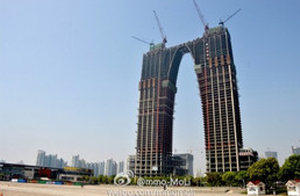News Corp settles, makes money. Believe it or not, Rupert Murdoch, his family, sons James and Lachlan and News Corporation will get a multi-million dollar benefit from a class action settlement. That action was settled overnight to the tune of $US139 million, the largest of its kind. This means Murdoch and News have removed another potential stumbling block to the separation of the company into good and bad bits mid-year.
The legal action was filed in Delaware (the most corporate friendly state in the US) by Amalgamated Bank, Central Laborers’ Pension Fund and the City of New Orleans Employee’s Retirement System in March 2011, claiming the $US600 million-plus purchase of TV production house Shine from Elisabeth Murdoch showed nepotism and poor governance. The complaint was changed in July of the same year to include claims relating to phone hacking at the News of the World, News Corp’s scandal-struck UK tabloid.
Now it seems News Corp will pay the $US139 million and then recover the amount from its insurers under what is called DOI– director and officer indemnity policies which cover board members and senior managers in the case of legal action claiming incompetence or mismanagement. In effect the payment to settle the class action will come from News Corp’s insurers. Plaintiffs alleged the News Corp board allowed Rupert to use the company he chairs as “his personal fiefdom” — because the action was against the board, the company’s insurers will have to fork out. The lawsuit also claimed Murdoch made political donations using News Corp funds to advance his conservative political agenda. The plaintiffs alleged these actions showed the board lacked independence and may have been in violation of election laws.
The settlement is reported to be the largest cash settlement in this type of a derivative case. A derivative lawsuit, such as this one, involves shareholders holding board members and company officers responsible for “harm” caused to the corporation. These types of cases usually settle for changes to corporate governance with payment going to the company, and shareholders benefiting indirectly. Some “harm” — News Corp shares have soared from around $US14 to more than $US31 (and record highs) since the action was launched as investors took advantage of a multibillion-dollar buyback and then the split announcement. — Glenn Dyer
China’s media buildings show unusual trend. Cities in China look alike. A grim contrast to the grandeur of ancient temples, this uniformity of urban design is the result of Soviet-influenced urban planning; cities designed to boost industrial productivity and enshrine social control. In recent years architecture has been more creative. Some of the world’s most striking buildings have been built in Beijing — the CCTV Tower is a marvel of angles and cantilevered style, let down slightly by its pet name among Beijingers: “da ku cha”, or “Big Underpants”, the Mandarin term for the old-fashioned undergarments very much required during biting winters.
This was an unavoidable comparison in a country where names, official or otherwise, trend towards the literal (the Olympic “Bird’s Nest”; the Mandarin for the Great Wall which translates to “long wall”). So the Gate to the East, a 74-storey skyscraper in Suzhou, had no chance of evading kinship with the CCTV Tower. Chinese media called it the “Arc de Triomphe of the East”. Chinese people called it the “Giant Underpants”, in reference to a perceived similarity to thermal long-johns.
But the national obsession with building below the belt seems to grow ever larger, the most recent example being the new People’s Daily headquarters. A propaganda mouthpiece, the paper has a reputation — and a corresponding nickname on Chinese social media — for screwing with the people. Rather than tempting the wrath of email filters, Crikey will let our readers figure out why a local blog has dubbed it the Yang to the CCTV Tower’s Yin …

We can sympathise, however, with the People’s Daily architects. In a country with such a storied construction history, it must have been difficult to come up with a way to make sure your building isn’t just another monumental erection. — Kway Teow in Beijing
New British hit will land for ABC. There’s a new star from British TV for Australia. Broadchurch is an eight-part ITV production that just wrapped on Monday. Ratings have been huge — 10 million a night, which puts it in the Downton Abbey class . It starts David Tennant (a former Dr Who) and Olivia Coleman as detectives who lead the hunt for the killers of an 11-year-old boy. And no it hasn’t gone to Seven, but to the ABC.
The series was made by Kudos, which is part of Shine and which in turn is part of News Corp. Seven picked up the weak Law and Order UK from Kudos/Shine in 2012. The Hour, the story about a 1950s BBC current affairs program which lasted two series, was screened here by the ABC; Hunted is another Kudos production (SBS), as is Life on Mars, Ashes to Ashes, Hustle and Spooks (all ABC).
Now News Corp controls Foxtel in Australia, which last week did that exclusive deal which will remove a lot of BBC first-run content (not Dr Who and QI) from ABC TV from early 2014 onwards. Did Broadchurch drop through the gap on the way to Australia? And why didn’t Ten try and grab it given Shine is the in-house family producer of choice for the struggling network? — Glenn Dyer








So you can insure yourself against your own incompetence and complicity in it?